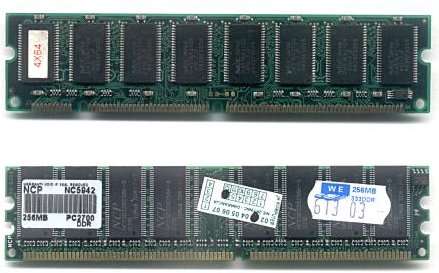Memory module

In computing, a memory module is a printed circuit board on which memory integrated circuits are mounted.[1] Memory modules permit easy installation and replacement in electronic systems, especially computers such as personal computers, workstations, and servers. The first memory modules were proprietary designs that were specific to a model of computer from a specific manufacturer. Later, memory modules were standardized by organizations such as JEDEC and could be used in any system designed to use them.
Types of memory module include:
- TransFlash Memory Module
- SIMM, a single in-line memory module
- DIMM, dual in-line memory module
Distinguishing characteristics of computer memory modules include voltage, capacity, speed (i.e., bit rate), and form factor.
References
- ↑ Bruce Jacob, Spencer W. Ng, David T. Wang (2008). Memory Systems: Cache, DRAM, Disk. Morgan Kaufmann Publishers. pp. 417–418.
This article is issued from Wikipedia - version of the 8/17/2016. The text is available under the Creative Commons Attribution/Share Alike but additional terms may apply for the media files.